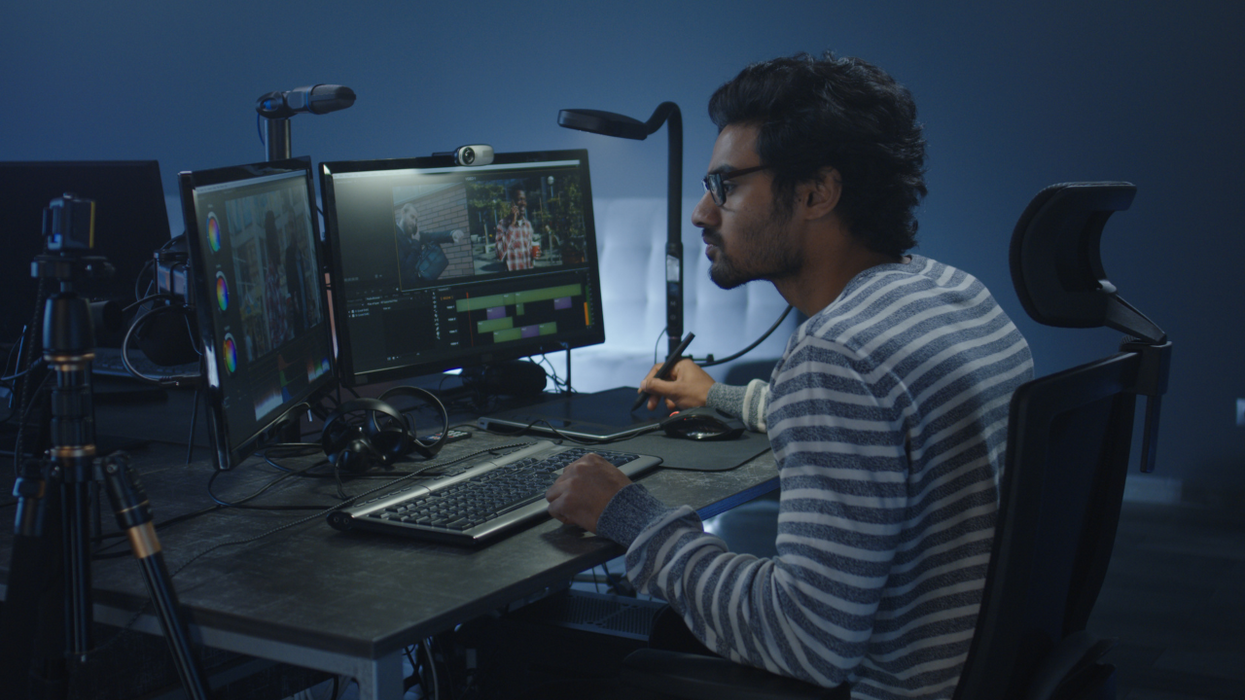How to Animate VFX on Top of Live-Action Background Plates
Everyone’s favorite fatherly VFX wizard is back with a brand new bag of tricks to help you animate and composite your 3D models.

Out of all of my favorite content-creating artists/educators in this world of film and video production, I don’t think there’s a single person more loved than the famous Action Movie Dad.
First unleashed on the internet some seven years ago now, Action Movie Dad—also known as VFX wizard Daniel Hashimoto—quickly made an endearing name for himself crafting high-concept fantastical worlds around handheld footage of his son around the house.
Hashimoto, to his extreme credit, has been more than a creator, as he’s been very open about sharing his process and his techniques and helping others make the bold step into the fascinating world of compositing and visual effects.
Now, after slowing down a bit over the past few years, we have another cool video from the Action Movie Dad to share, as well as some very helpful tips and tricks for how to bring inanimate objects to life in your own projects.
How to Bring Inanimate Objects to Life
So for this video, as part of the “Cheap Tricks” series on Red Giant’s YouTube channel. Hashi, as he’s called, focuses his energies on sharing how to bring inanimate objects to life, as well as teaching you (and qualified training teams) to work faster.
The basics of Hashi’s techniques for animating statues, replacing background elements, and improving how visual effect shots can be captured on the fly are laid out step by step in the video. It just takes a little help from Hashi’s friends along the way.
For those just starting, this is a great tutorial as it goes over the very basic steps anyone would need for creating VFX shots like these from scratch. These simple elements include:
- Getting Inspired
- Filming a Plate
- Removing Objects
- Creating Models
- Animating Models
- Compositing Models
As you can see, the key to any visual effect project is to start with the inspiration, then find the right pathways to bring your ideas to life. For modeling and composting in particular, you can follow along with some cool tips and tricks in this tutorial which shows how to turn cheap miniatures into awesome visual effects.

To pull off these visual effects, Hashi shows his work by using programs like Adobe After Effects and Cinema 4D, as well as using tools—of course, including several from Red Giant—along the way. The tools used in the video above include:
- Simple Rope/Cloth dynamics
- Joints
- Asset Library
- Content-Aware Fill
He also makes use of Maxon’s normalize track script for After Effects, which you can check out here.
While Cinema4D is a very powerful tool, the techniques Hashi describes can also be implemented in other software suites.

Techniques for compositing, general VFX, and modeling aren't exclusive to one piece of software and can be transposed to other programs. Unfortunately, this won't be a 1:1 shift and users will need to discover how to implement the technique within their system.
For example, if you're searching for a budget-friendly solution, you can model in Blender and then composite using the built-in Fusion tab in DaVinci Resolve.
Finding Your Inspiration
I like this episode of Hashi’s Cheap Tricks program in particular because it is very inspirational and focused not just on the nuts and bolts of VFX (which, in many ways, is the easy part). But also more so on the fantastical elements and creativity that actually needs to go into creating new and awe-inspiring compositions.
If you’re interested in diving even more in-depth into some more of these tutorials and this Cheap Tricks series, you can check out more episodes with Hashi and Seth from Red Giant every Friday on their VFX & Chill series as well.
But let us know your thoughts on this process. And feel free to share your own compositions in the comments below!
Source: Action Movie Dad











